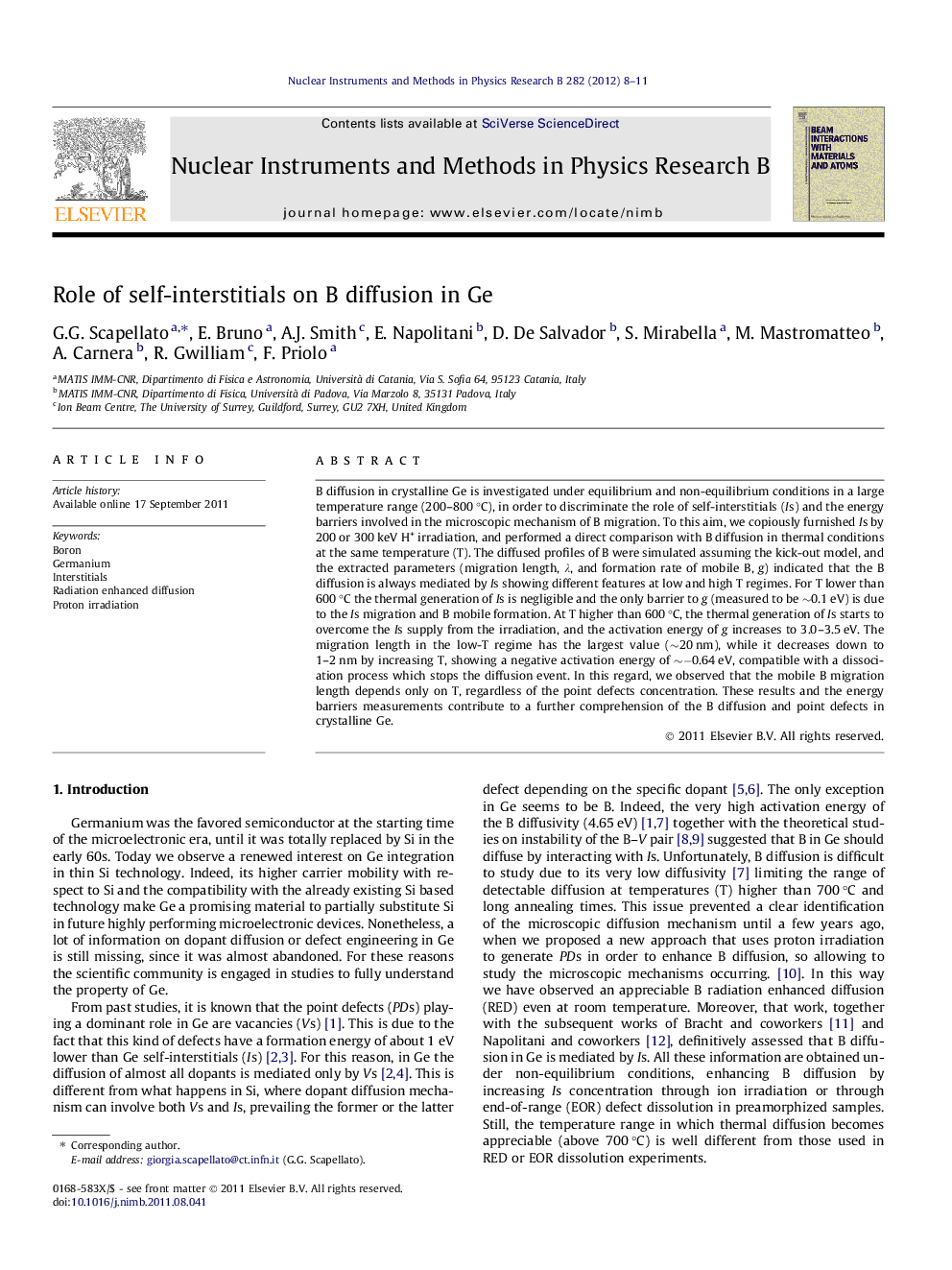| Article ID | Journal | Published Year | Pages | File Type |
|---|---|---|---|---|
| 1680753 | Nuclear Instruments and Methods in Physics Research Section B: Beam Interactions with Materials and Atoms | 2012 | 4 Pages |
Abstract
B diffusion in crystalline Ge is investigated under equilibrium and non-equilibrium conditions in a large temperature range (200-800 °C), in order to discriminate the role of self-interstitials (Is) and the energy barriers involved in the microscopic mechanism of B migration. To this aim, we copiously furnished Is by 200 or 300 keV H+ irradiation, and performed a direct comparison with B diffusion in thermal conditions at the same temperature (T). The diffused profiles of B were simulated assuming the kick-out model, and the extracted parameters (migration length, λ, and formation rate of mobile B, g) indicated that the B diffusion is always mediated by Is showing different features at low and high T regimes. For T lower than 600 °C the thermal generation of Is is negligible and the only barrier to g (measured to be â¼0.1 eV) is due to the Is migration and B mobile formation. At T higher than 600 °C, the thermal generation of Is starts to overcome the Is supply from the irradiation, and the activation energy of g increases to 3.0-3.5 eV. The migration length in the low-T regime has the largest value (â¼20 nm), while it decreases down to 1-2 nm by increasing T, showing a negative activation energy of â¼â0.64 eV, compatible with a dissociation process which stops the diffusion event. In this regard, we observed that the mobile B migration length depends only on T, regardless of the point defects concentration. These results and the energy barriers measurements contribute to a further comprehension of the B diffusion and point defects in crystalline Ge.
Related Topics
Physical Sciences and Engineering
Materials Science
Surfaces, Coatings and Films
Authors
G.G. Scapellato, E. Bruno, A.J. Smith, E. Napolitani, D. De Salvador, S. Mirabella, M. Mastromatteo, A. Carnera, R. Gwilliam, F. Priolo,
